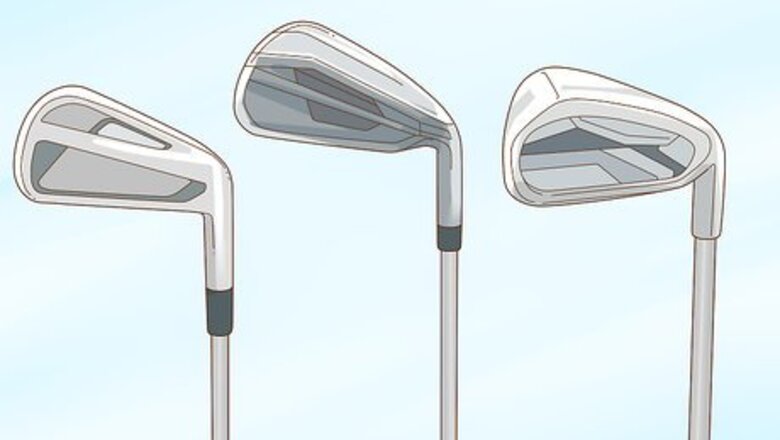
views
Using the Right Grip
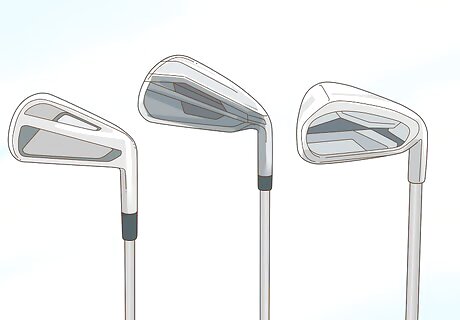
Use correctly sized clubs. The right size iron can make a huge difference in your swing. Additionally, the length of your driver and putter are going to be different than the right size of your irons. There are several factors that determine the correct club size for you, including your swing style, skill level, posture, and height. If you are renting clubs, or purchasing from a clubhouse, ask for assistance to determine your correct club sizing.
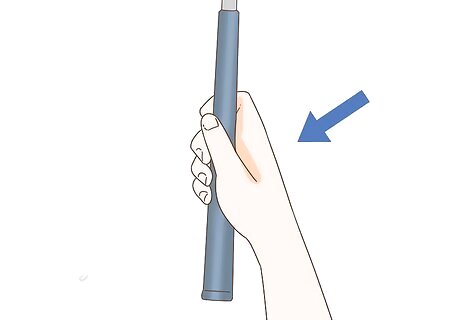
Grip the club with your dominant hand. With the clubhead resting on the ground, grab the club with your dominant hand where the grip connects to the shaft. Hold the club with your fingers underneath the shaft and your thumb resting across the top of the grip. Grip the club firmly, but not too hard. You should not have to bend or lean over to grab the club. If you do, your club may be too short.
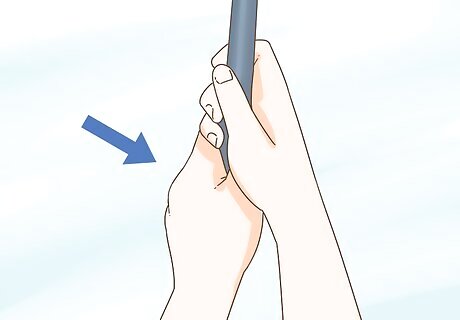
Rest the club in the palm of your non-dominant hand. If you’re right-handed, place your left hand behind your right, and lay the grip of the club across the palm of your left hand. If you are left-handed, then do the opposite. Rest the thumb of your non-dominant hand across the grip of the club. It should feel relaxed and comfortable.
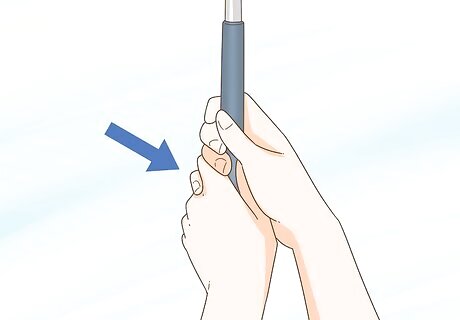
Interlock your pinkie finger and your index finger. With the thumb of your dominant hand flat across the shaft of the club, interlock the pinkie finger of your dominant hand and index finger of non-dominant. Wrap the rest of your fingers around the club.This will ensure a tight and secure grip. Don’t grip too hard! A tense grip means your swing will not be fluid and smooth.
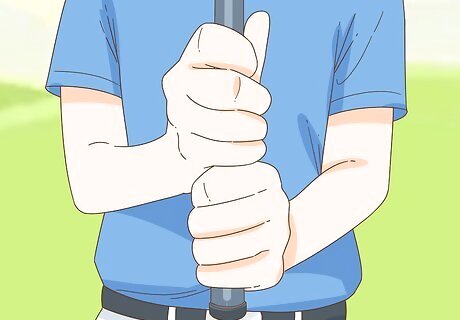
Try using a baseball grip as an alternative. If the standard golf grip is uncomfortable or just isn’t working for you, you can try using a baseball grip. With your dominant hand, hold the grip of the club where it meets the shaft. Then place your non-dominant hand behind your dominant, and wrap your fingers around the grip. It will feel a little like you’re holding a baseball bat. This grip is also good for children or people who are brand new to golf.
Finding the Right Stance
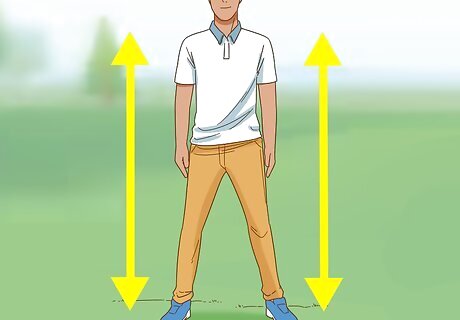
Stand with your feet shoulder-width apart. This will give you a good foundation and allow you to shift your weight on your backswing and follow-through. If your stance is too narrow, your shot could go off target. Too wide of a stance will make it more difficult to achieve good rotation. Try shifting your weight around and rocking back and forth to be sure you’re standing in a stable, but comfortable position.
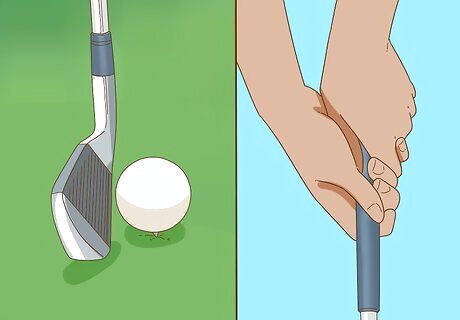
Rest the club head on the ground near the ball as you find your grip. While you’re setting your club into a comfortable grip, rest the club on the ground so you can find an accurate position. If you set your grip without checking the space between you and the ground, you may not have the correct positioning for the shot. You also don’t want to rest the club head too close the ball. If you accidentally tap the ball, it may cost you a stroke!
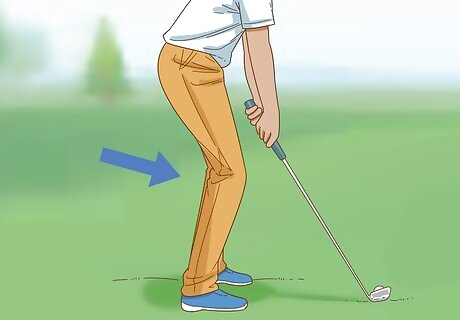
Bend your knees slightly to find a comfortable stance. Slightly flexed knees allow for better weight distribution, comfort, and greater rotation during your swing. It’s important to stay comfortable throughout your swing. A rigid posture will lead to a poor shot. Avoid squatting down too far and check to see that your knees are in line with the balls of your feet.
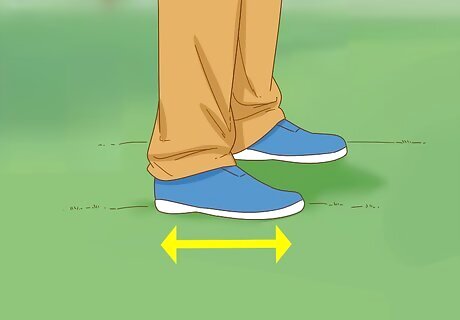
Balance your weight evenly on your heels and the balls of your feet. Evenly distribute your weight on both feet, but don’t let your weight shift back. Your weight should be spread evenly between your toes and heels. In order to effectively rotate your upper body, you must be able to rotate on the balls of your feet. You can check your weight distribution by wiggling your toes. If you can’t raise them, then your weight is too far forward. If you’re able to raise the front of your foot, then your weight is too far back in your heels.
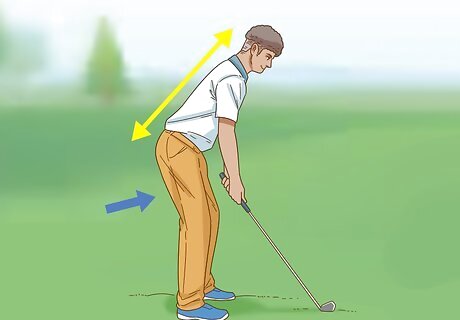
Bend forward slightly at your hips while keeping your back straight. Your spine is the part of your body around which your arms and the club will rotate. You want to have a straight vertical axis, with your head and neck at the same angle as your spine, and your chin up and away from your chest to prevent any rounding of your upper back. Your shoulders should be relaxed and not hunched. Every little extra bit of bend in your back decreases your ability to rotate your shoulders, so keep your back straight! Make sure that you don’t bend at your waist and lower back. The rotation of your swing can injure you if you’re not in proper alignment.
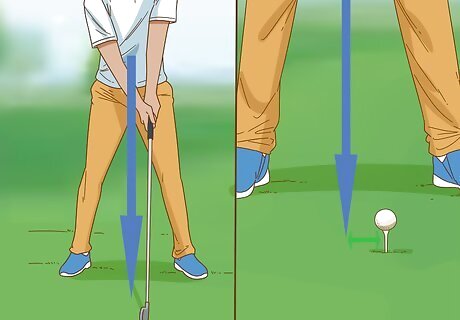
Line up the ball slightly in front of the centerline of your chest. The alignment of the golf ball itself in your stance is another crucial part of having a good shot. Place the golf ball one ball length over from the centerline of your chest towards your non-dominant arm. This allows for a better “catch” on the downswing. If you’re right-handed, you can line up the ball with the logo of your shirt.
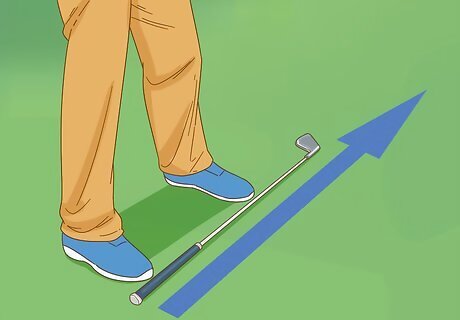
Use a club to make sure your feet and shoulders are pointed in the right direction. This is a quick and easy way to see where you are aiming. Get into your stance and place a club along the tips of your toes. The club should point to where you want your ball to go. If it doesn’t, then adjust your stance. After placing the club on the ground, it may help to take a step back to see where it is pointing. You can also lay a club down to line up your stance and aim your shot.
Swinging the Club
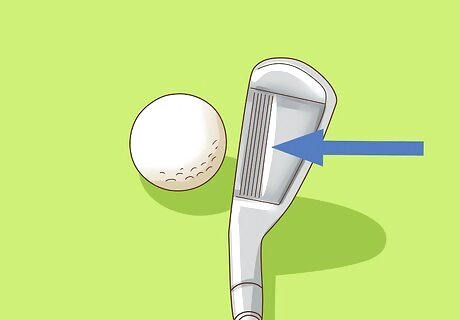
Line up the center of the clubface behind the ball. Where the club connects with the ball is also important. After you’ve found a good grip and position behind the ball, line up the broad center of the clubface directly behind the golf ball. Make sure you're in a comfortable and relaxed position and not don't have to reach down. Remember not to touch the ball with your club before you swing!
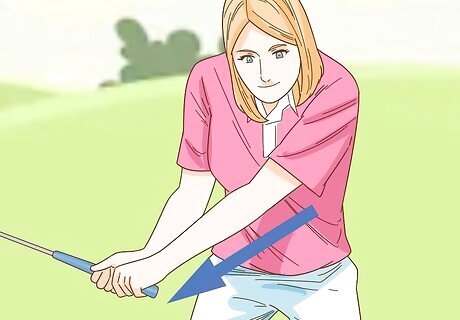
Keep your front arm straight as you bring the club back smoothly. Golf is a sport that utilizes good technique over raw strength. Iron shots, in particular, can go awry if you don’t use a good and clean stroke. Don’t overpower or attempt to demolish the ball. Instead, think “low and slow” as you bring the club into your backswing. Even though your front arm is meant to be rigid and straight, you still need to stay relaxed in order to have fluid motion in your swing.
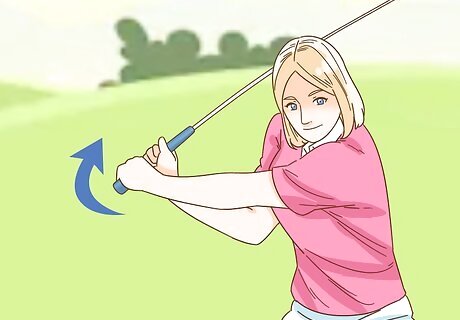
Hinge the club at your wrists to allow the club to come over your head. Use your wrists to add a greater range of motion to your swing by allowing the club to travel further overhead. Keeping your front arm straight, allow your wrists to flex so that the club is able to travel further behind. This allows for greater torque and momentum in your swing. The wrist break should feel natural and comfortable. If you have limited mobility in your wrists, or if it hurts to hinge at the wrists, you may need to modify your swing.
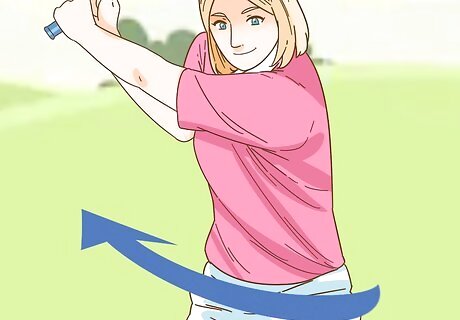
Rotate your hips and torso to allow the club to travel further. To increase the power of your swing, you need to use the strength of your whole body. With your weight evenly distributed on the balls of your feet, rotate your hips and shoulders back to increase the backswing of your club. Move in a smooth and fluid motion, rather than moving one section of your body at a time. Keep your head from moving by keeping your eyes on the golf ball. Your front arm may bend slightly at the elbow to allow for greater rotation.
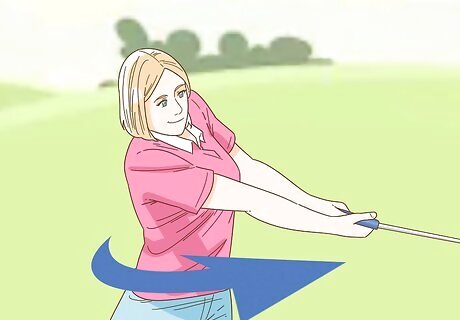
Swing the club through with your arms and the rotation of your body. Don’t linger at the top of your backswing for too long. With your eyes focused on the ball, swing the club down from the top of your backswing as soon as you reach full extension and rotation. When you make contact with the ball, your front arm should be straight. Pausing at the top of your backswing causes your body to tense up and will lead to a poor stroke.
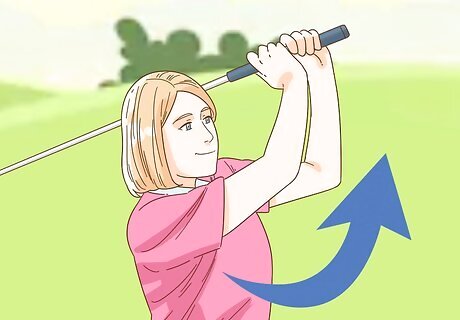
Follow through with your swing. A good golf shot with an iron does not end when the clubface hits the ball! Swing all the way through until the club is over your front shoulder. An even and consistent swing all the way through will keep the clubface on the same plane, and prevent the ball from slicing to the right or hooking to the left. Keep your head down and your eyes on the ball until your swing is complete.
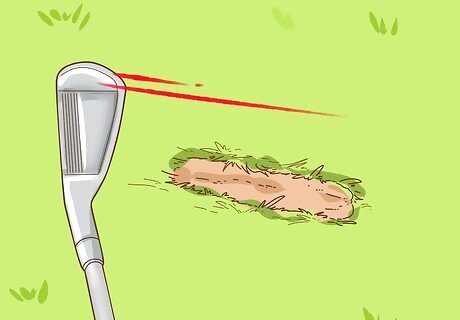
Take a small divot out of the grass with your swing. Because irons are designed to make contact with the golf ball on a descending path, a proper swing means that the iron is still moving downward after striking the ball and will dig slightly into the grass. The club should still strike the ball first, but a small scrape on the follow through is the mark of a good iron shot. There should not be a large chunk of turf removed. Striking the ground with your club is bad for your club and could lead to an injury.
Practicing for a Consistent Stroke
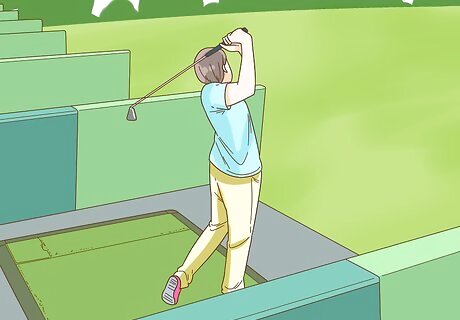
Use your irons on the driving range. While it is a lot of fun (and maybe a little cathartic) to get out on the range with your driver and smash some golf balls, it’s also important to take time to perfect your shots with your irons. You may find that slight variations to your grip or stance produce better results. The best way to improve your iron shots is to practice them! Use the distance markers and posts on the driving range to practice your aim.
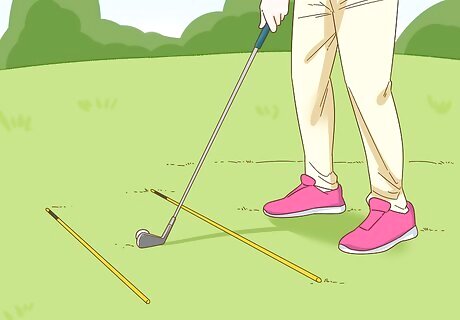
Use alignment sticks to tighten up your swing. Alignment rods or sticks are a great tool to improve the form of your swing. A common way to use them is to place two rods on the ground parallel to one another. Aim the sticks to where you want the ball to go and place a golf ball in between them. This creates a lane that your swing should follow. Choose a target down range to aim for. As you practice with your irons, the alignment sticks can allow you to see any deviation in your swing.
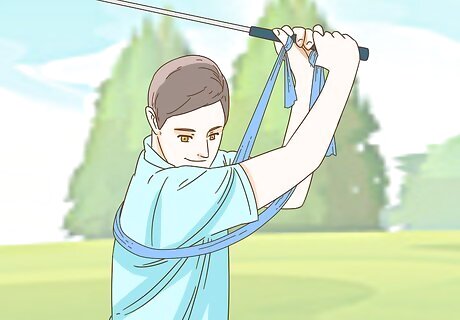
Use an exercise band to improve your swing. Inconsistent iron strokes are often caused by flaring out your elbows or pulling them in too close to the body during the swing. You can correct this error and strengthen your swing by using resistance bands. Put the band on like a backpack, loop both of your thumbs through the bands, and take a proper grip on the club. As you swing with good form, you’ll feel a slight inward pull from the bands that you need to counteract by keeping your arms straight. The resistance should not be so great that you are straining to keep your arms straight. After practicing for a while with the bands on, take them off to see if you notice an improvement in your swing. Don’t wear the bands for too long or you can develop tension in your back, neck, and shoulders.
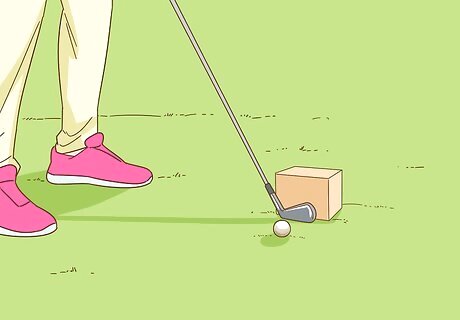
Do a wood block drill to improve your takeaway speed. The takeaway is the first part of the backswing when you begin to bring the club backward. Get into your golf stance with your iron, take a block of wood or a book, and place it directly behind your club on the ground, with no space between the block and the club. Then push the object back with the head of your club. Do this exercise up to 100 times to improve your takeaway speed.




















Comments
0 comment